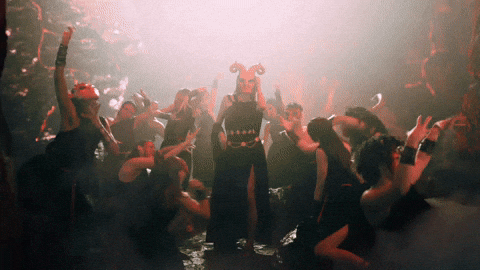Greek Mythology, Taylor Swift, and the "Hymn to Demeter"
Revisiting Jodi's favorite episode this year: Greek Mythology and Taylor Swift
✍️ A quick letter from the editors:
If you love what we’re doing with AP Taylor Swift—the deep dives, the lyrical nerdery, the laughs—we’d be so grateful for your support!
Nothing’s changing about our regular podcast content, but we’re working on some fun extras for paid Substack subscribers, which we’ll be rolling out in the coming months.
In the meantime, if you want to support the show and help us keep making it, you can now do that with a paid subscription.
🏺This week’s episode: Greek Mythology
“Fatefully, I tried to pick my battles 'til the battle picked me” This week, we're diving into the timeless influence of Greek mythology in Taylor Swift's music by exploring connections between Taylor's songs and classic Greek myths. Jodi finds links between Demeter and Persephone’s sorrow in The Hymn to Demeter and the Folklore song "My Tears Ricochet.” Maansi shows us how "Long Story Short” sounds like Odysseus recounting his epic journey as he returns home. And Jenn gets into the ancient story of the Labyrinth and how it reflects themes of self-discovery and transformation in "Labyrinth." Is Taylor Swift a modern-day Homer? Listen and find out!
🎧 Listen above and ⬇️ scroll below to read Jodi’s college essay on “The Hymn to Demeter”
✨ We want to hear from you! ✨
Whether you listen weekly, read occasionally, or just joined us—this quick survey helps us understand who’s here and how to make the podcast + newsletter even better. It takes 5 minutes, and we’d be so grateful for your input.
🎥 Sneak Peek
Catch excerpts from the podcast and behind-the-scenes content on YouTube, TikTok, and Instagram.

 Tiktok failed to load.
Tiktok failed to load.Enable 3rd party cookies or use another browser
📜 This Week’s Extra Credit by Jodi
I wrote this paper my senior year of college in a class called “Life After Death.” Did I think I was signing up for a class on spirituality? Yes. Did I get a literature and religion class instead? Also yes.
Seasons of Life: The Hymn to Demeter And Life After Death
As the last remnants of winter melt away, we joyously await Spring to come. The promise of renewed life and fertility that heralds in the warmer months helps us cope with the cold, desolate winter days. The cyclical nature of the seasons is nature’s demonstration of life after death—the rebirth of flowers and foliage makes nature one of the only forces on earth that has power over life and death. Homer’s Hymn to Demeter explains the origins of the seasons, explaining how the goddess Demeter and her daughter Persephone come to have power over life and death.
The Hymn to Demeter tells of one beloved tale in Greek mythology, that of Demeter’s daughter Persephone and her abduction by Hades. While this is one of many scenarios illustrated in the Hymn, it is central to the Hymn’s themes of immortality and fertility. Persephone’s kidnapping motivates Demeter to challenge the boundaries between life and death, mortals and immortals. This is echoed by the unique compromise that allows Persephone to return to her mother from Hades for part of the year, which initiates the seasons and represents the goddesses’ power over life and death. The text correlates death with winter and implies that Persephone’s death (symbolized by her marriage to Hades) brings death into the land of the living. By confronting the notion of our own mortality, “we grow to understand our roles in life not only directly but also indirectly” (Segal 210). Therefore, the presence of death in the realm of the living positions the Hymn as a meditation on Demeter and Persephone’s roles in life and death, as well as the roles of the Greeks in relation to the Gods.
Because Demeter is the goddess of fertility, she breathes life into nature and has control over life and death. A depiction of an abundant, beautiful earth is provided in the text in the moments before Persephone is abducted. Before her kidnapping, Persephone “played with the full-blossomed daughters of Okeanor, gathering flowers, roses, crocuses, and beautiful violets, all over a soft meadow” (Hymn 5). The language in the text here provides a backdrop for the enormity of Demeter’s life-giving ability, as well as those of women in general. The adjective “full-blossomed” used to describe the daughters of Okeanor not only describes the age and beauty of the girls Persephone plays with, but also alludes to the connection between women and fertility. The use of floral language (“blossomed”) symbolizes the notion of rebirth and reincarnation; the flower has been one of a number of symbols of rebirth throughout ancient history.
The ability of women to give birth means that they can, in essence, create life. In ancient Greek culture, women and other life-creating organisms (such as plants and crops) were thought to be associated with death as well as fertility because they had the ability to create life. By using these images in the opening lines of the Hymn, the significance of women in the cycle of life is established and emphasized—without women, there would be no birth, therefore, life would cease to exist. This becomes an important aspect of the Hymn because it is Demeter (a female) who ultimately holds the fate of men and gods in her ability to create and eliminate life, even though the leader of the gods is male.
The symbols of fertility and rebirth in the opening lines are deeply contrasted with the depiction of a desolate earth after Persephone’s abduction. Here, the Hymn illustrates Demeter’s power to take life away, making her a foil for Hades, who rules over the dead as god of the Underworld. In her grief, Demeter deprived the earth of all crops: “No seed in the earth sprouted, for fair-wreathed Demeter concealed it” (Hymn 306). As a result, “she would have destroyed the whole race of mortal men with painful famine and would have deprived the Olympians of the glorious honor of gifts and sacrifices” (Hymn 310-312). Demeter essentially has the power to deprive the gods of their immortality because of the interdependence of gods and mortals. The gods need mortals to make sacrifices and gifts of crops in order to maintain their immortality; otherwise, they too can die. Sacrifices were also necessary to keep the dead in Hades (Segal 215). The mortals make sacrifices to the gods to ensure that their own immortality can be achieved by living a prosperous life, and also to guarantee a comfortable afterlife. Because Demeter robbed the earth of its crops, the mortals cannot make sacrifices to the gods, and the gods cannot maintain their immortality. In this manner, the text reveals the intimate relationship between mortality and immortality.
Accordingly, this could suggest that by depriving the earth of life, Demeter forces mortals and immortals to grapple with the possibility that death means an absence of life, not an afterlife. If the mortals cannot make sacrifices to keep the dead in Hades, then there is newfound uncertainty regarding what happens after death. The barrenness left behind by Demeter depicts a lifeless earth, one in which no mortal, god, or soul can survive. In order to restore order to the life cycle and ensure that the immortals remain immortal and that the mortals can find comfort and reassurance again in the notion of the afterlife, Hades is forced to bring Persephone back to Demeter, so that she can bring the earth back to life.
The circumstances that enable Persephone to return to her mother from Hades make up the part of the Hymn that describes the origin of the seasons. It is in this manner that the story reveals a human aspect of the gods, allowing mortals to relate to the gods and thereby see how this myth relates to their own lives. Before returning to earth, Hades gives Persephone a pomegranate seed to eat, “contriving secretly about her, so that she might not spend all her days again with dark-robed, revered Demeter” (Hymn 372). The pomegranate is another symbol of fertility, literally representing the seed of the male entering the body of the female in order to create new life. As mentioned earlier, however, the female’s power of fertility and life-giving also, by association, links them with death: When Persephone eats the pomegranate seed, she is marrying Hades by consuming the fruit of his seed and thereby marrying herself to the underworld. Because of this, she cannot fully return to life with her mother on earth. Instead, “[she] shall fly and go to the depths of the earth to dwell there a third of the seasons in the year, spending two seasons with [Demeter] and the other immortals” (Hymn 398). The part of the year when she is in Hades, she presides over the dead as Queen of the Underworld, representing her own mortality and the mortality of all beautiful things on earth.
It is here that the text links death with winter, the season of infertility and barrenness. The presence of death in the land of the living enforces Demeter’s power over life and death, and serves as a reminder of her grief and desperation when Persephone was kidnapped. This then correlates the winter months with a humanizing aspect of the gods, the ability to feel loss and sadness, which further strengthens the bond between the mortals and the immortals. When Persephone returns to earth to live among the immortals on earth, she brings life and prosperity with her, ushering in the Spring season and the six months of growth and abundance that enable mortals to live, the immortals to receive their sacrifices, and the cycle of the seasons to continue.
The Hymn then raises a question about the connection between rebirth and immortality. The immortality of the gods is one in which there is no death, just perpetual life. However, Persephone’s immortality is based on the continual cycle of death and rebirth. The rebirth and regeneration of the seeds of the earth perpetuate the existence of life after death; it is but one example of an afterlife that positions death not as the ultimate end but instead as part of a new beginning. Demeter and Persephone’s power to continually bring life back to earth exemplifies the life cycle’s emphasis on renewal of life. The Hymn reassures mortal men that life, albeit in a different form, can continue after death. The life lived on earth is not one’s sole purpose, but instead it is part of the entire cycle of life and death that perpetuates one’s memory, just as Persephone returns each spring along with seeds of new life and the promise of a flourishing earth and abundant fertility.








